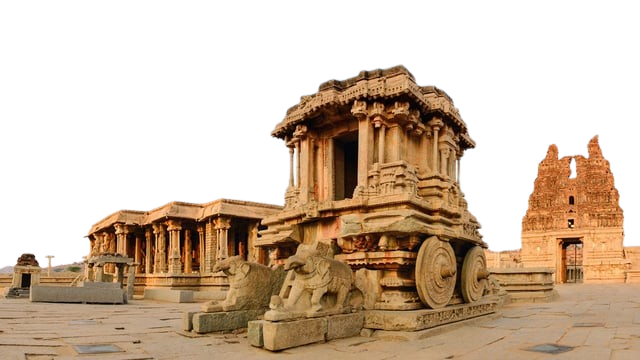Conserving Hampi: Challenges and Efforts to Preserve Heritage
Hampi, the erstwhile capital of the Vijayanagara Empire, is a treasure trove of history and architecture. However, its grandeur has faced challenges in recent years. The collapse of a temple pavilion during heavy rains raised serious concerns about the preservation of this UNESCO World Heritage Site. Adrija Roychowdhury traveled to Hampi to explore what it truly takes to conserve this once-vibrant city and maintain its historical significance.
The Rich Heritage of Hampi
Hampi is renowned for its stunning temples, intricate sculptures, and unique landscape dotted with massive boulders and lush greenery. The site boasts several architectural marvels, including the Virupaksha Temple and the Vittala Temple, which showcase the artistry and engineering skills of the Vijayanagara period. Once a thriving metropolis, Hampi was a center of trade, culture, and religion, attracting scholars, artisans, and pilgrims from across the subcontinent.
Challenges in Conservation
Despite its historical importance, Hampi faces numerous challenges that threaten its preservation. The recent incident of a temple pavilion collapsing highlighted the urgent need for attention and action. Experts argue that the neglect stems from a lack of adequate funding, insufficient maintenance, and environmental factors such as erratic weather patterns that have intensified due to climate change.
In a detailed assessment, historians and conservationists pointed out that many structures are in a state of disrepair, with erosion, vegetation overgrowth, and water damage posing significant threats. The ongoing need for restoration work, which requires skilled artisans familiar with traditional construction techniques, further complicates the conservation efforts.
The Role of Authorities and Local Communities
Efforts to conserve Hampi have been ongoing, but they require collaboration between government authorities, local communities, and conservation organizations. The Archaeological Survey of India (ASI) is primarily responsible for the site’s upkeep, but the lack of sufficient resources has hindered comprehensive restoration projects.
Local communities, who depend on tourism for their livelihoods, also play a vital role in conservation. Engaging residents in preservation efforts can foster a sense of ownership and responsibility towards the heritage site. Educational programs and workshops can help raise awareness about the importance of maintaining Hampi’s historical integrity.
Innovations in Conservation
Innovative approaches to conservation are being explored to address the challenges facing Hampi. Experts advocate for the use of modern technology, such as 3D scanning and digital mapping, to create accurate records of the site. These techniques can aid in monitoring structural changes and planning restoration projects effectively.
Furthermore, sustainable tourism practices are essential to ensure that the influx of visitors does not contribute to further degradation of the site. Implementing visitor management strategies, such as limiting access to vulnerable areas and promoting eco-friendly practices, can help protect Hampi’s delicate environment.
Conclusion
Conserving Hampi is not just about preserving its physical structures; it is about maintaining the cultural legacy of the Vijayanagara Empire. The recent collapse of a temple pavilion serves as a wake-up call for stakeholders to prioritize preservation efforts. By combining traditional knowledge with modern technology and engaging local communities, it is possible to ensure that Hampi remains a living testament to India’s rich history for future generations. The journey of conserving Hampi may be challenging, but it is essential for keeping the spirit of the Vijayanagara Empire alive.



